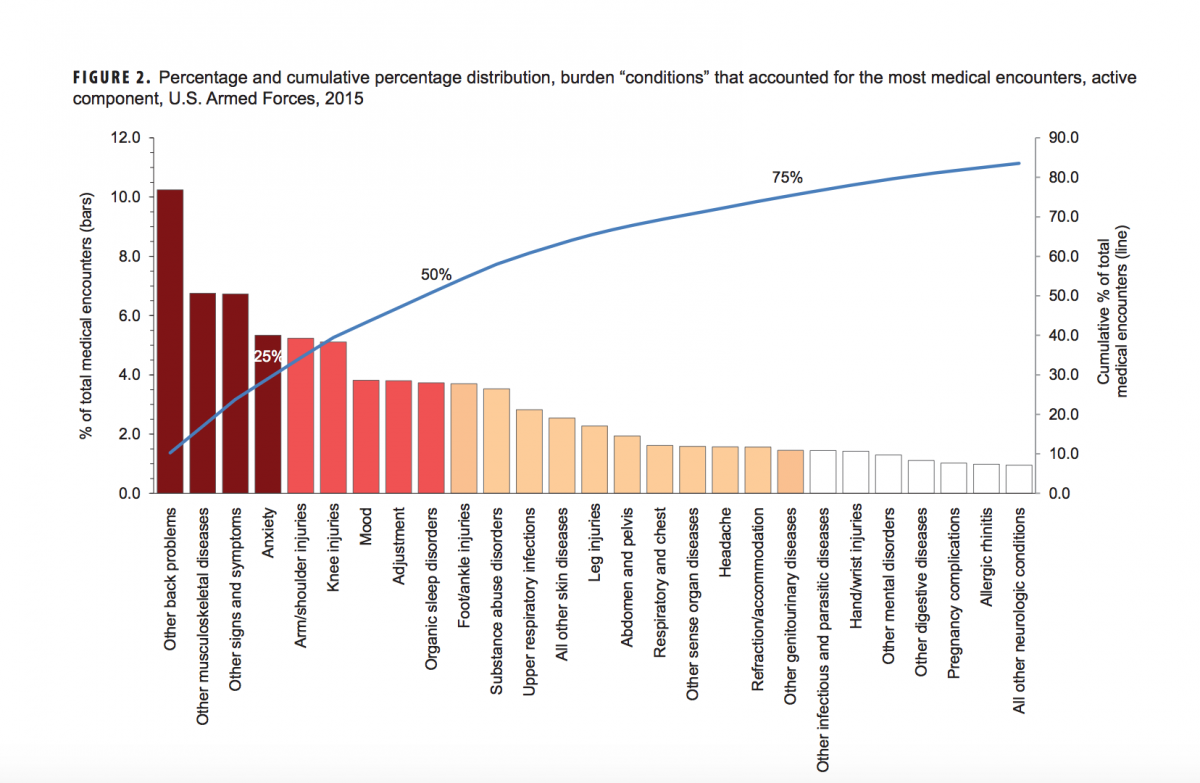By the Numbers - May 17, 2016
42.8%
The percentage of "hospital bed days" among active duty Service members in 2015 attributable to mental disorders, according to an article in the April 2016 issue of the Armed Forces Health Surveillance Branch's Medical Surveillance Monthly Report (PDF).
According to the article -- Absolute and Relative Morbidity Burdens Attributable to Various Illnesses and Injuries, Active Component, U.S. Armed Forces, 2015:
In 2015, more service members (n=550,283) received medical care for injury/poisoning than any other morbidity-related category. In addition, injury/poisoning accounted for more medical encounters (n=2,134,133) than any other morbidity category and one-fiftth (21.2%) of all medical encounters overall.
Mental disorders accounted for more hospital bed days (n=147,457) than any other morbidity category and 42.8% of all hospital bed days overall. Together, injury/poisoning and mental disorders accounted for more than half (54.8%) of all hospital bed days and almost two-fifths (39.6%) of all medical encounters.

42.8%
The percentage of "hospital bed days" among active duty Service members in 2015 attributable to mental disorders, according to an article in the April 2016 issue of the Armed Forces Health Surveillance Branch's Medical Surveillance Monthly Report (PDF).
According to the article -- Absolute and Relative Morbidity Burdens Attributable to Various Illnesses and Injuries, Active Component, U.S. Armed Forces, 2015:
In 2015, more service members (n=550,283) received medical care for injury/poisoning than any other morbidity-related category. In addition, injury/poisoning accounted for more medical encounters (n=2,134,133) than any other morbidity category and one-fiftth (21.2%) of all medical encounters overall.
Mental disorders accounted for more hospital bed days (n=147,457) than any other morbidity category and 42.8% of all hospital bed days overall. Together, injury/poisoning and mental disorders accounted for more than half (54.8%) of all hospital bed days and almost two-fifths (39.6%) of all medical encounters.


